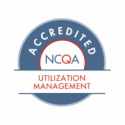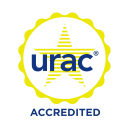| Electronic medical records set the stage for pushing patient data throughout the healthcare process, from admission to remittance. As data crosses multiple platforms, software, and devices, who benefits? A recent study shows patients benefit through consistent care. Organizations can also show clear and positive results with the right partner helping push data through the claims process. Click for our new eBook on Peer Review services and how the right web-based software improves care and finances. |
Technology may be the answer to increasing doctor to doctor communication and eliminating avoidable medical errors. A new study published in JAMA International Medicine suggests that electronic medical records (EMR) and other important web-based tools can help decrease the occurrence of medical mishaps. The study analyzed how effective web-based tools were at enhancing communication, specifically during patient hand-offs.
The Study
The JAMA study examined a total of 5,000 patient cases and surveyed residents who worked late night and early morning shifts at Brigham and Women’s Hospital. The tool automatically pulled information “scans a patient’s electronic medical record for the information that doctors and other health workers need to know most. Then it automatically pulls that information into a separate page that’s been designed to highlight those essential details¹.”After, researchers were able to check residents’ work for medical errors and rate those errors on how avoidable they were.
The Results
Kaiser Health News reported that:
- The number of medical mistakes was cut in half the year after the hospital introduced the software tool and taught employees how to use it.
- There were 77 errors identified between November 2012 and February 2013, compared with 45 in the following year.
Researchers believe that because shift-based work is the standard in health systems, there is more opportunity for information to get lost in the shuffle (then previously when doctors worked 24-hour shifts). It’s believed that web-based tools and EMR platforms could help solve this problem. While Brigham and Women’s new web-tool was built in-house, it is a great model for hospitals and health systems to look at for inspiration.
“As hospital care is increasingly shift based, a clear and efficient handoff process is vital. [This] study … shows how web-based handoff tools may improve hospital workflow and patient safety, but only if they are carefully built and integrated into existing systems.” Robert Wachter, interim chair at the University of California San Francisco’s Department of Medicine¹
As integrated care becomes more of a reality, moving patient information through the healthcare system becomes critical for long-term patient metrics and meeting organizational goals. You can read about JAMA study here or read the full KHN article here.





